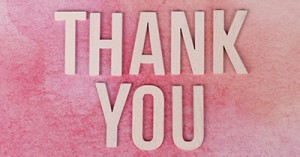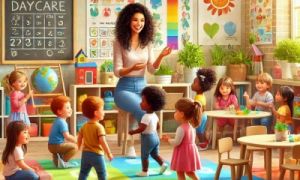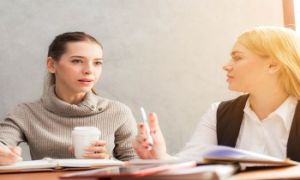Writing transition statements in early childhood education is an important task that helps ensure a smooth transition for children moving from early childhood settings to primary school. The following article provides information on the Purpose Of Transition Statements, Key Components Of Transition Statements, Tips For Writing Transition Statements, Examples and more.
Purpose of Transition Statements
Transition statements provide a summary of a child’s learning, development, and interests. They are used to:
- Inform Primary School Teachers: Give primary school teachers a clear understanding of each child’s strengths, needs, and learning styles.
- Support Continuity of Learning: Ensure that the learning and development that occurred in early childhood settings is continued and built upon in primary school.
- Engage Families: Involve families in the transition process by sharing insights and observations about their child’s learning journey.
Key Components of Transition Statements:
-
Child’s Strengths and Interests: Highlight what the child enjoys and excels at. This can include specific skills, favorite activities, and areas of interest.
-
Learning and Development: Provide a summary of the child’s progress in key areas such as language, cognitive skills, social-emotional development, and physical abilities.
-
Teaching Strategies: Suggest strategies that have been effective in supporting the child’s learning and development. This can help primary school teachers tailor their approach to meet the child’s needs.
-
Family Input: Include insights from the child’s family about their experiences and observations. This ensures a holistic view of the child’s development.
-
Goals for Transition: Outline specific goals for the child’s transition to primary school, focusing on areas where they may need additional support or encouragement.
Tips for Writing Transition Statements
-
Use a Strengths-Based Approach: Focus on the child’s strengths and positive attributes. This helps create a supportive and encouraging tone.
-
Be Specific and Clear: Provide concrete examples and specific observations to give a clear picture of the child’s abilities and needs.
-
Collaborate with Families: Engage families in the process by seeking their input and sharing the transition statement with them before finalizing it.
-
Reflect on the EYLF Outcomes: Link the child’s learning and development to the Early Years Learning Framework (EYLF) outcomes to provide a comprehensive overview.
-
Keep it Concise: While it’s important to be thorough, ensure the statement is concise and easy to read for primary school teachers.
Samples Of Transition Statements
Example 1: Child with Strong Social Skills
- Liam enjoys playing with his peers and is often seen leading group activities. He has a keen interest in building with blocks and creating complex structures.
- He shows a strong interest in music and loves participating in singing and dancing activities.
- Language: Liam communicates effectively and uses a wide range of vocabulary. He enjoys telling stories and engaging in conversations with both adults and children.
- Cognitive Skills: He demonstrates problem-solving skills, especially in construction and building activities. He can follow multi-step instructions and enjoys challenges.
- Social-Emotional: Liam is empathetic and often helps his peers. He is able to express his emotions appropriately and understands the feelings of others.
- Physical: He is active and enjoys outdoor play, particularly running and climbing. He has good coordination and balance.
- Provide opportunities for Liam to engage in group projects and leadership roles.
- Incorporate music and movement activities to support his interest in music.
- Encourage his problem-solving skills through building and construction challenges.
- Liam’s parents have noticed his love for music and have enrolled him in a local music class. They also report that he enjoys playing with his siblings and organizing games at home.
- Continue to support Liam’s social skills by providing opportunities for cooperative play and group activities.
- Nurture his interest in music through regular singing and dancing sessions.
- Challenge his cognitive skills with more complex building and construction tasks.
Example 2: Child with Emerging Language Skills
- Ava enjoys art and craft activities, particularly painting and drawing. She has a vivid imagination and often creates detailed artwork.
- She loves animals and enjoys reading books about different animals and their habitats.
- Language: Ava is developing her language skills and is beginning to use more complex sentences. She enjoys listening to stories and is starting to retell them in her own words.
- Cognitive Skills: She shows curiosity and a desire to learn about the world around her, especially animals and nature.
- Social-Emotional: Ava is kind and gentle with her peers. She is learning to express her feelings and is developing friendships.
- Physical: She has good fine motor skills, demonstrated through her detailed artwork. She enjoys outdoor play and is developing her gross motor skills.
- Encourage Ava’s language development through interactive storytime and opportunities to retell stories.
- Support her interest in animals with themed activities and books.
- Provide a variety of art materials to nurture her creativity.
- Ava’s parents have noticed her love for animals and often visit the zoo and nature reserves. They also report that she enjoys drawing pictures of the animals she sees.
- Continue to support Ava’s language development with interactive and engaging storytelling activities.
- Nurture her interest in animals through educational activities and resources.
- Encourage her social skills by facilitating playdates and group activities.
Example 3: Child with Strong Physical Skills
- Noah enjoys physical activities and excels in sports and outdoor play. He is particularly interested in soccer and often organizes games with his peers.
- He has a keen interest in vehicles and enjoys playing with toy cars and trucks.
- Language: Noah communicates confidently and enjoys talking about his interests, especially sports and vehicles.
- Cognitive Skills: He shows good problem-solving skills, particularly in activities that involve physical manipulation and construction.
- Social-Emotional: Noah is energetic and enthusiastic. He is learning to take turns and share with his peers.
- Physical: He has strong gross motor skills and enjoys activities that involve running, jumping, and climbing. He also has good hand-eye coordination.
- Provide opportunities for Noah to engage in physical activities and sports.
- Incorporate his interest in vehicles into learning activities, such as building tracks and ramps.
- Support his social skills by encouraging cooperative play and teamwork.
- Noah’s parents have noticed his love for soccer and have enrolled him in a local soccer team. They also report that he enjoys playing with toy cars and building tracks at home.
- Continue to support Noah’s physical development with regular sports and outdoor activities.
- Nurture his interest in vehicles through themed activities and projects.
- Encourage his social skills by facilitating group games and cooperative activities.
Format For Writing Transition Statements
1. Child’s Information:
- Name: [Child’s Name]
- Date of Birth: [Child’s Date of Birth]
- Date of Statement: [Date]
2. Introduction:
- Brief Overview: Provide a brief introduction about the child, including their personality, interests, and any relevant background information.
3. Strengths and Interests:
- Strengths: Highlight the child’s strengths in various areas such as social skills, cognitive abilities, physical development, and emotional regulation.
- Interests: Describe the child’s interests and favorite activities, which can help primary school teachers engage them effectively.
4. Learning and Development:
- Language and Communication: Summarize the child’s language skills, including vocabulary, communication style, and any notable achievements.
- Cognitive Development: Outline the child’s cognitive abilities, problem-solving skills, and areas of curiosity.
- Social-Emotional Development: Describe the child’s social interactions, emotional regulation, and relationships with peers and adults.
- Physical Development: Provide information on the child’s gross and fine motor skills, physical activities they enjoy, and any areas of strength or need.
5. Teaching Strategies:
- Effective Strategies: List teaching strategies that have been successful in supporting the child’s learning and development. This can include specific approaches, activities, or tools that have worked well.
6. Family Input:
- Family Observations: Include insights and observations from the child’s family about their learning and development at home.
- Family Goals: Mention any goals or aspirations the family has for their child’s transition to primary school.
7. Goals for Transition:
- Short-Term Goals: Identify specific goals for the child’s transition to primary school, focusing on areas where they may need additional support or encouragement.
- Long-Term Goals: Outline broader goals for the child’s ongoing development and learning.
8. Conclusion:
- Summary: Provide a brief summary of the key points from the transition statement.
- Contact Information: Include contact information for the early childhood educator or center, in case the primary school needs further information.
Example Transition Statement Based On Format
- Name: Emily Johnson
- Date of Birth: January 15, 2019
- Date of Statement: October 22, 2024
Introduction: Emily is a curious and imaginative child who enjoys exploring the world around her. She has a keen interest in nature and animals, often leading her peers in outdoor activities.
Strengths and Interests:
- Strengths: Emily excels in creative activities, particularly drawing and painting. She has strong fine motor skills and a vivid imagination.
- Interests: She loves animals and enjoys reading books about wildlife. Emily also enjoys outdoor play and nature walks.
Learning and Development:
- Language and Communication: Emily communicates confidently and uses a wide range of vocabulary. She enjoys storytelling and often creates imaginative stories during play.
- Cognitive Development: She shows curiosity and problem-solving skills, particularly in science-related activities.
- Social-Emotional Development: Emily is empathetic and often helps her peers resolve conflicts. She is developing strong friendships and works well in group activities.
- Physical Development: She is active and enjoys participating in physical activities such as running, climbing, and dancing.
Teaching Strategies:
- Provide opportunities for Emily to engage in nature-based learning and science experiments.
- Encourage her storytelling by incorporating more creative writing and drama activities.
- Support her social skills by facilitating group projects and cooperative games.
Family Input: Emily’s parents have noticed her interest in animals and have been visiting local farms and zoos to support this interest. They also report that she enjoys reading books about wildlife.
Goals for Transition:
- Continue to nurture Emily’s interest in nature and science through hands-on activities.
- Support her social-emotional development by providing opportunities for collaborative play and peer interactions.
Conclusion: Emily is a bright and enthusiastic learner who will thrive in a primary school environment that supports her interests and strengths. For further information, please contact [Educator’s Name] at [Contact Information].
This format ensures that the transition statement is comprehensive and provides valuable insights for primary school teachers.
Further Reading
Practical Examples For Writing Transition Statements
Transition To School Statements
References:
Kindergarten Transition Statements, QCAA Qld
Transitions Learning and Development, Victoria Education Department







 As an Educator in Australia, your pay rate falls under the Children’s Services Award 2010. This award states the minimum amount that an employer can
As an Educator in Australia, your pay rate falls under the Children’s Services Award 2010. This award states the minimum amount that an employer can When working as a qualified Early Childhood Teacher (with a university degree) within a service, your rate of pay will come from the Educational Services
When working as a qualified Early Childhood Teacher (with a university degree) within a service, your rate of pay will come from the Educational Services When working as a Diploma Qualified Educator your pay rate is from the Children's Services Award 2010. This Award states your minimum rate of pay
When working as a Diploma Qualified Educator your pay rate is from the Children's Services Award 2010. This Award states your minimum rate of pay When working as a Cert 3 Qualified Educator, your pay rate is from the Children's Services Award 2010. This Award states your minimum rate of
When working as a Cert 3 Qualified Educator, your pay rate is from the Children's Services Award 2010. This Award states your minimum rate of Educational Leaders play a crucial role in their early childhood service by ensuring that the educational program aligns with best practices and supports the holistic
Educational Leaders play a crucial role in their early childhood service by ensuring that the educational program aligns with best practices and supports the holistic In early childhood education and care, ratios are more than a technicality—they are a frontline safeguard. Every child deserves responsive supervision, emotional connection, and developmental
In early childhood education and care, ratios are more than a technicality—they are a frontline safeguard. Every child deserves responsive supervision, emotional connection, and developmental With the new national child safety reforms kicking in on 1 September 2025, early childhood services like yours have a real opportunity to lead the
With the new national child safety reforms kicking in on 1 September 2025, early childhood services like yours have a real opportunity to lead the Here’s a comprehensive Mobile Phone and Smart Watch Policy tailored for early childhood education and care (ECEC) services in Australia, aligned with the latest 2025
Here’s a comprehensive Mobile Phone and Smart Watch Policy tailored for early childhood education and care (ECEC) services in Australia, aligned with the latest 2025 The Sea of Fish Challenge is a national initiative that invites children, educators, families, and communities to create and display fish artworks as a symbol
The Sea of Fish Challenge is a national initiative that invites children, educators, families, and communities to create and display fish artworks as a symbol Across the early childhood education and care sector, educators are sounding the alarm: current staffing ratios are insufficient to deliver safe, meaningful, and developmentally appropriate
Across the early childhood education and care sector, educators are sounding the alarm: current staffing ratios are insufficient to deliver safe, meaningful, and developmentally appropriate


